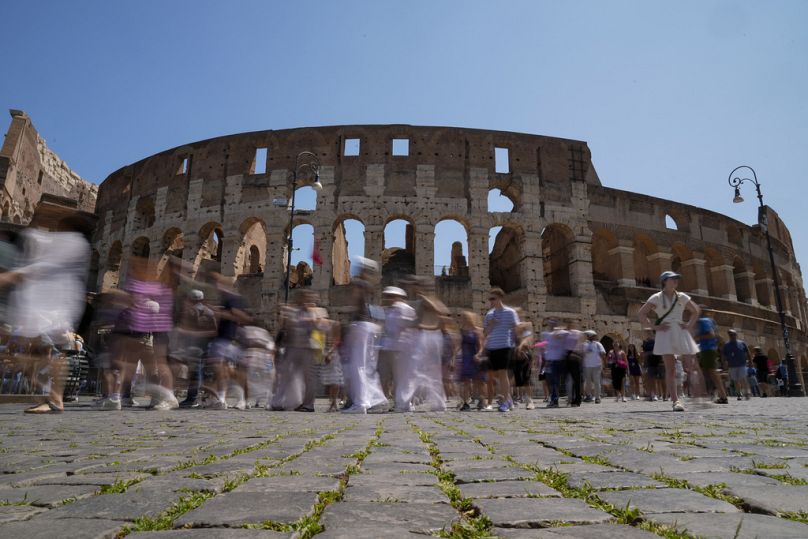Italian police say they have identified the man and the woman he was with from photos but have not named the couple.
Italian police say they believe the man filmed while engraving his name and that of his apparent girlfriend last week on the ancient Roman Colosseum is a tourist who lives in Britain.
The identification was made using photographic comparisons, Italian Carabinieri said in a statement.
The press release also noted, "That the proceeding is in the preliminary investigation phase, therefore the suspect must consider himself innocent until a final sentence is issued".
UK media is widely reporting the culprit who carved “Ivan+Haley 23” on the Colosseum wall to be 27-year-old Bulgarian-born fitness instructor Ivan Dimitrov, who also goes by the name Ivan Hawkins.
He and his long-term girlfriend 33-year-old Hayley Bracey reportedly live together near the city of Bristol in southwest England. Bracey is thought to run her own sports nutrition business.
Italy's Minister for Culture, Gennaro Sangiuliano said "This action offended all those around the world who appreciate the value of archaeology, monuments and history. I now hope that justice will take its course by strictly applying the laws."
Sangiuliano said he was looking forward to the Parliamentary debate on toughening laws to punish those who ruin archaeological heritage. "Those who damage will pay," he added.
He also warned that if the person is brought to trial, the Ministry of Culture will declare itself an offended party.
What exactly happened?
Italy's most popular tourist attraction, the nearly 2,000-year-old Colosseum is a UNESCO World Heritage Site and one of the best-known symbols of Imperial Rome.
Footage of the incident went viral on social media, at a time when Romans have already been complaining about hordes of tourists visiting the city this year.
The video shows a bearded young man in a blue flowery shirt scratching his and his girlfriend's name with a key on an internal wall of the ancient Roman stone amphitheatre.
Fellow tourist, Ryan Lutz, from Orange City, California, who filmed the tourist in the act, posted the video on YouTube and Reddit. It received over 1500 social media views and was picked up by Italian media.
Lutz said on Tuesday that he was “dumbfounded” that someone would deface such an important monument.
Following the widespread circulation of the video, numerous prominent government officials expressed strong condemnation of the incident.
Sangiuliano called the writing carved into the almost 2,000-year-old Flavian Amphitheatre “serious, undignified and a sign of great incivility.”
Hefty fines
The incident is the fourth time this year that such graffiti has been reported at the Colosseum. The Italian news agency ANSA said whoever was responsible for the latest episode risked €13,000 in fines and up to five years in prison.
Tourism Minister Daniela Santanche said she hoped the tourist would be sanctioned “so that he understands the gravity of the gesture.”
Calling for respect for Italy’s culture and history, she vowed: “We cannot allow those who visit our nation to feel free to behave in this way.”
In 2014, a Russian tourist was fined €20,000 and received a four-year suspended jail sentence for engraving a big letter ‘K’ on a wall of the Colosseum.
The following year, two American tourists were also cited for aggravated damage after they carved their names in the monument.
Watch the video above to see what happened.



















